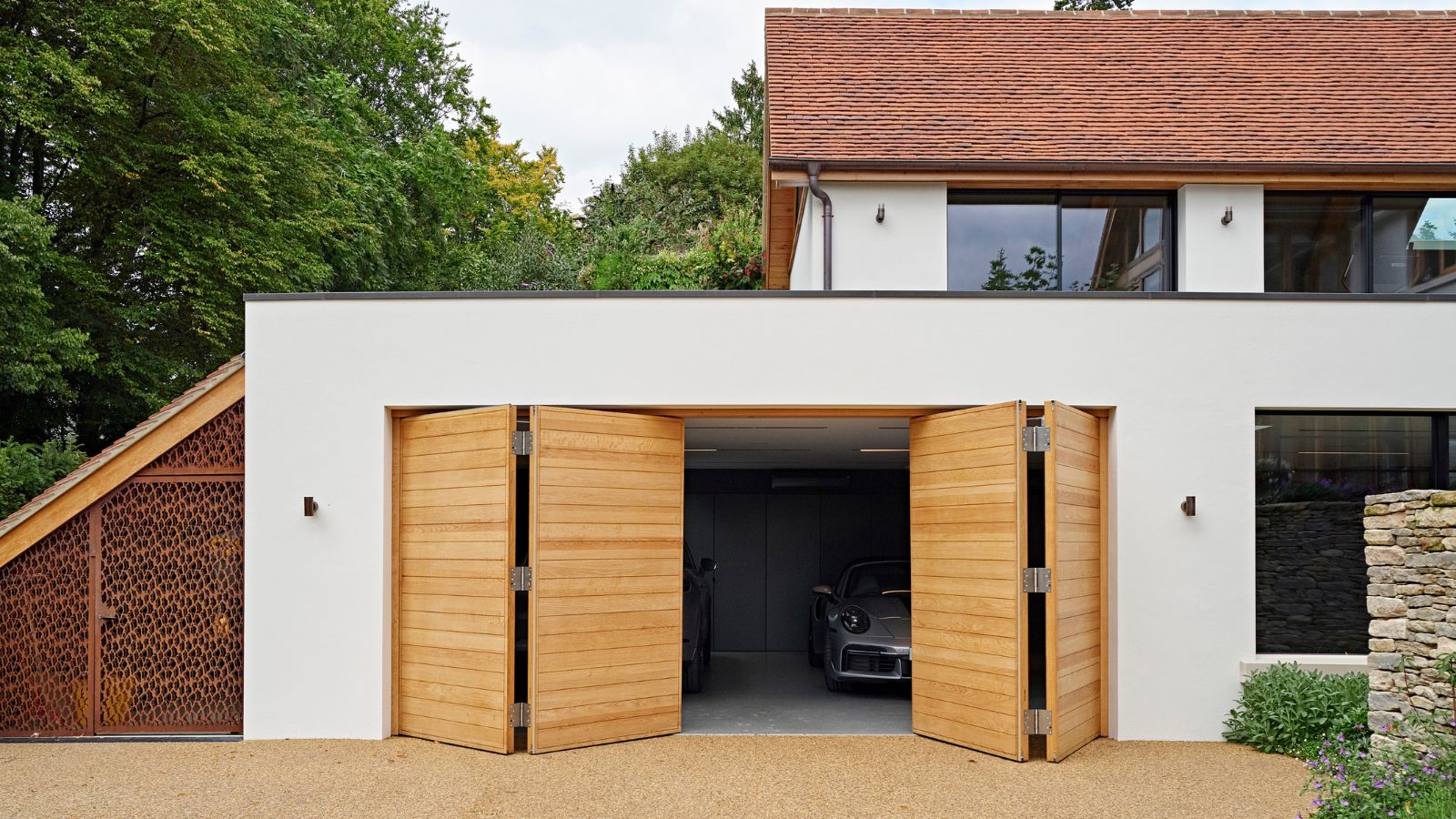Does Your Plot Have Access Issues?
In order to become a building plot a site needs access — in most areas that means vehicular access

In some urban or city areas, it might be acceptable or even desirable to have pedestrian access only, but more often than not, the requirement for vehicular access is a pre-condition for the granting of planning permission, with that consent containing further stipulations that have to be fulfilled before the permission is operable.
As a self builder, you must take particular care to ensure that these planning conditions are capable of being satisfied within your remit.
If they require the action or approval of third parties, then it is important to make sure that there are contracts in place and that any payments necessary are taken into account when agreeing the purchase price.
Access to a Public Highway
Need more advice or inspiration for your project? Get two free tickets to the Homebuilding & Renovating Show.
Most people think that access directly onto a public highway is preferable, but there are a few considerations:
- If you directly adjoin the highway then, as long as it is not a trunk or classified road and a new access won’t be dangerous, you do not need permission to form the entrance.
- You will need the consent of Highways, or other relevant parties, to cross any pavement. They will also stipulate the construction of the crossover and the details of the dropped kerbs, and it is entirely possible that any works will have to be carried out by an approved contractor.
- If the access will cross a grassed verge then, as long as it is not a trunk or classified road, you again won’t need permission.
- If there is a gap between the proposed site and the highway in the ownership of a third party, then their consent must be obtained. If this gap has been purposely created as a ransom strip, their consent will only come following payment and you should do all you can to ensure that any such payment is at the expense of the vendors.
- If access is required to a trunk or classified road, then the consent of the Highways Agency or local authority responsible for the maintenance of the road will be required; this is normally granted as part of the planning approval. A new access will not be allowed if it involves vehicles entering or leaving the carriageway close to a junction, on a sharp corner or at a blind spot. If the new entrance is allowed it will be subject to conditions, including those concerning gradients, drainage and the position of gates.
- If the road will serve a number of homes, then the authorities may require that it and the drains beneath it – together with any street lighting – are constructed to Highways standards and that, once completed, they are formally adopted. This requires that the works are carried out by a single body and that a bond is taken out to cover any necessary remedial works.
Access to an Unadopted Road
Many plots have access onto private roads that have access to the adopted highway:
- If a plot is part of the garden of a house that has a right of access over private land, then you must make sure that the right of way is applicable to the new house. If the right of way specifically identifies a house by name or number then it is possible that this right can’t be passed onto the new property.
- Rights of access should include the right to bring services into the plot.
- Responsibility for future maintenance of a shared private roadway should be decided and set down within a legal framework.
- If the access road has no traceable owners, then you would be wise to consider a Single Premium Indemnity Policy with the costs hopefully being defrayed by the vendor.
- Those enjoying access via an unadopted road can, if a majority so declare, require its adoption by the local authority. However, the costs of bringing the road, its sewers and lighting up to adoption standards would be borne by each of the residents.
Shared Driveways
Backland plots may have to share a driveway with the house in front. Infill plots may also be required to share the existing driveway with the original house. But bear in mind:
- The right of way should be clearly set out in the transfer documentation.
- If additional works are required to bring the driveway up to a standard capable of serving the other house, the costs would usually be borne by the developer — you. Similarly, you would pay for any remedial works following construction.
- Terms should preclude any parking that might impede the access of the other party.
- The documentation should clearly set out joint maintenance responsibilities.
Prescriptive Easements
If a property has enjoyed an unrestricted right of way over land in the ownership of others, then a right of way can be established by long usage. This right is granted by application to the Land Registry. However, it must have been continuous for a period of 20 years or more (although a break of one year is allowed for) and must have been obtained without force, without secrecy and without explicit consent.
The right can only attach to a Freeholder and must not be illegal. It is not possible to establish such a right over land owned by British Waterways, Railways land or Crown land.
Things to Remember When Creating Access
You are likely to need to hire an approved contractor to carry out works to the highway — always check with your local authority.
- Gates normally require a 45° splay and must be set back 4.5-6.5m from the carriageway and open inwards
- Usually, there should be allowance for two cars to be parked, which must be able to enter or leave the property in a forward gear, requiring space for turning
- You may have to consider creating a temporary access for construction traffic, as well as provide hardstanding for offloading
- Part B5 of the Building Regulations requires access for a fire engine, setting out minimum road and gateway widths, and turn space
Get the Homebuilding & Renovating Newsletter
Bring your dream home to life with expert advice, how to guides and design inspiration. Sign up for our newsletter and get two free tickets to a Homebuilding & Renovating Show near you.
David is one of the UK's leading self build and plotfinding experts, and a serial self builder who has been building homes for 50 years. The author of Building Your Own Home, now in its 18th edition, and the Homes Plans Book, David spent decades as a speaker and expert at self build exhibitions such as the Homebuilding & Renovating Show. He also helped countless budding self builders find their dream building plots as part of his long-running Plotfinder Challenge series in Homebuilding & Renovating magazine. He has self built 14 homes.

